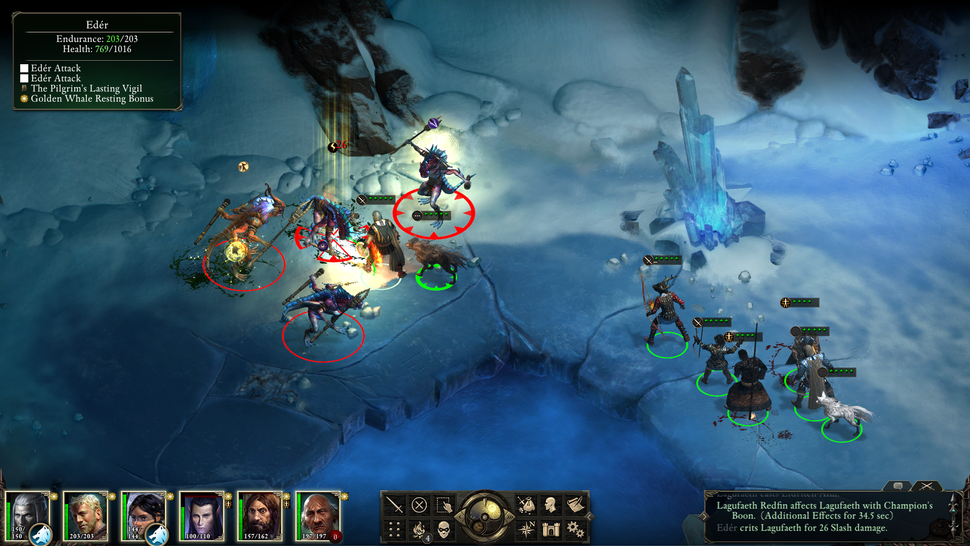
This basically means that every fight could potentially start off with an immortal character that can just wade through everything at will, but it requires a lot of character development planning to make it happen. That would normally be quite a chore, but it's possible to set up the AI to do it for you with character specific configurations, similar to what Dragon Age offered. Since all spells and abilites are now per-combat instead of per-rest, all these buffs can be cast for every fight. Such a character wouldn't even need a shield to tank, thus allowing them to go all out with two weapons and still be considerably more sturdy than most tanks. Due to power level, these spells will be slightly weaker than a pure Druid, but most of the damage will come from unarmed attacks in various Shapeshifter forms.Ī multiclassed character, here in the form of an Arcane Knight, which is a combination of Paladin and MageĪnother example of this is a Mage combined with a Paladin to create a tank-like killing machine who can cast a wide range of buffs to enhance the high, natural defenses of Paladins, effectively making them immortal. They also maintain most of their Druid spells, which means they can buff, heal and deal damage with spells if need be. However, these drawbacks are easily offset by the advantages of being able to combine the strengths of two classes, such as combining a Monk with the Druid subclass "Shapeshifter", which allows players to utilize the unarmed skills of a Monk while being shapeshifted into various animal forms. Another drawback is gaining less "power level", which is basically a way of letting lower level spells remain relevant even later in the game. The main drawback is gaining new abilites slightly slower, which also means they will never get access to level 8 and 9 abilities. It's certainly not because multiclassed characters aren't powerful enough, despite having a few drawbacks. This offers a ridiculous amount of options and flexibility, to the point where it can even be considered overwhelming, which is probably why there is an in-game recommendation against multiclassing for new players. If you decide to import a character, a lot of major decisions will be imported, but you can still select a new class and appearance, probably because of the sweeping changes the character creation system has received.Ĭlasses, races and attributes should be familiar to people who played Pillars of Eternity 1Īll classes and races from the original are still present, but they've also added multiclassing and subclassing, and even multiclassing involving subclasses. It also shows a level of craftsmanship that is not present in either Tyranny or Pillars of Eternity.īefore exploring the Deadfire Archiplego, however, a main character must be created or imported from Pillars of Eternity 1. The game is still set to world of Eora, but the rather bleak nation of Dyrwood has been replaced by a huge, sprawling archipelago called the Deadfire Archipelago, which offers a form of exploration and atmosphere that Dyrwod simply doesn't come close to. The Deadfire Archipelago is much more rewarding to explore than Dyrwood was
#PILLARS OF ETERNITY WHITE MARCH PT 2 REVIEW HOW TO#
After two decent attempts, Pillars of Eternity and Tyranny, it's fair to say that Obsidian Entertainment has gained considerable experience in how to make isometric, party based RPG's with the Unity engine. They probably should have been though, as Pillars of Eternity 2 is flat out better than its predecessor in pretty much every way. This led to a mediocre reception when Pillars of Eternity 2 was announced, and the expectations weren't all that great ahead of this year's release. What's strange about Pillars of Eternity is that, while the reception, reviews and ratings were good at the time, it's still considered "good, but not great" by a lot of people, especially if played without the two DLCs, The White March part 1 and 2.


Three years later, Pillars of Eternity was released to critical acclaim, including in our own review by Corwin. Fans were hyped, and the following Kickstarter campaign became the most successful campaign in video game history by obtaining roughly $4 million in funding. In 2012, Obsidian Entertainment announced that they were working on a game similar to the Baldur's Gate games.


 0 kommentar(er)
0 kommentar(er)
